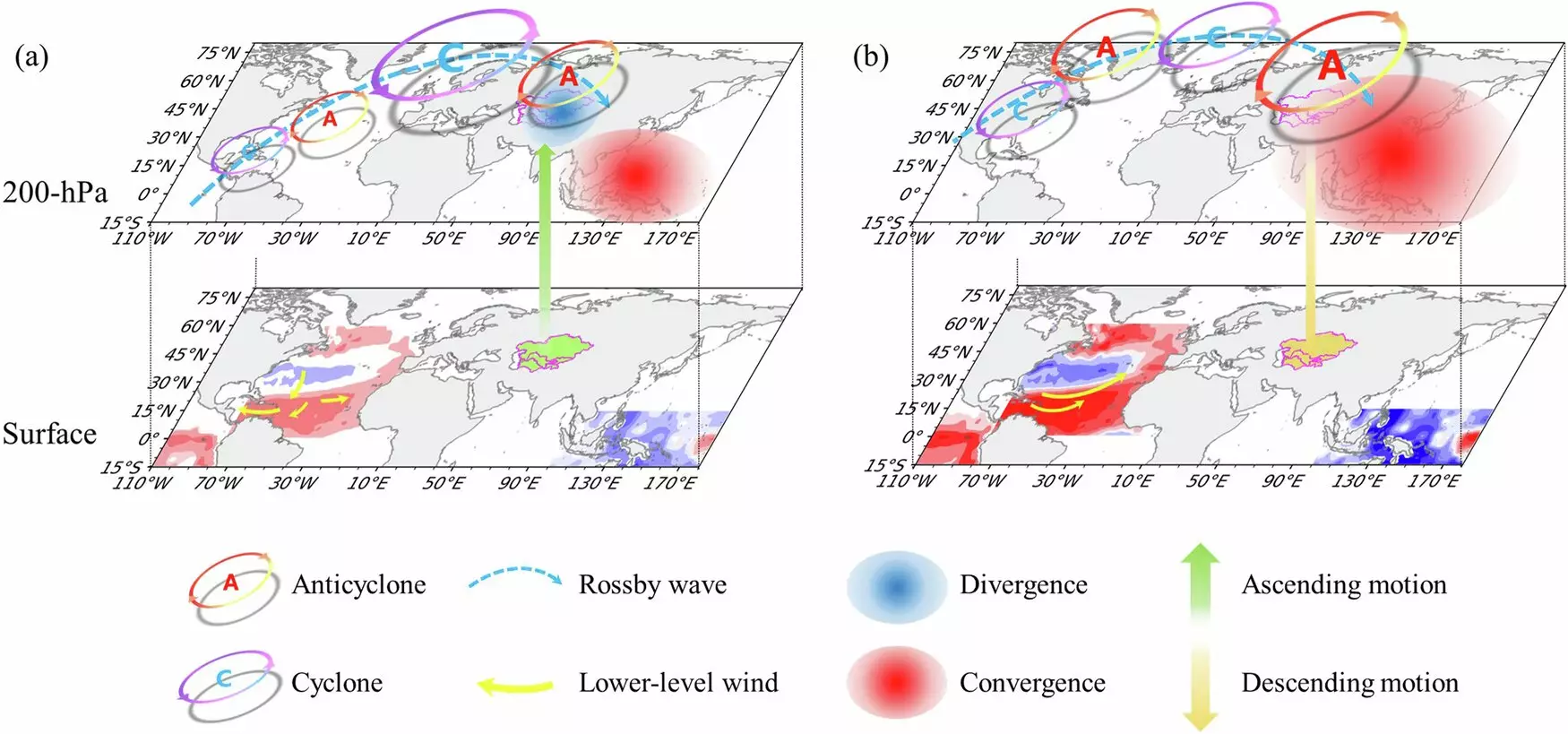Central Asia, comprising Kazakhstan, Uzbekistan, Turkmenistan, Kyrgyzstan, and Tajikistan, represents one of the most significant semi-arid to arid regions globally. Its continental climate—characterized by harsh winters and hot summers—creates a delicate balance within its ecosystem, particularly under the strain of changing precipitation patterns. Understanding the variability of spring rainfall in this region is crucial, not only for ecological balance but also for agricultural productivity and economic stability.
The agricultural livelihoods of millions depend on seasonal rainfall, with the primary rainy season occurring in spring. This season aligns closely with the major growing cycle for crops, making the stability and predictability of rainfall a key factor for food security. Consequently, fluctuations in precipitation, dictated by broader climatic phenomena like the El Niño-Southern Oscillation (ENSO), have profound implications. A well-established correlation exists between ENSO events and changes in rainfall patterns in Central Asia; typically, El Niño conditions enhance moisture availability in the region. However, new research indicates that this relationship is neither static nor straightforward and has shown significant variations over decades.
The Fluctuating Influence of ENSO
Recent investigations by scientists from the Institute of Atmospheric Physics of the Chinese Academy of Sciences have added depth to our understanding of the ENSO and spring precipitation dynamics. Their findings, published in the journal npj Climate and Atmospheric Science, reveal a fluctuating connection between ENSO events and spring rainfall that has transformed radically since the 1930s. After weakening significantly during that decade, the connection strengthened leading up to the 1960s, only to show resurgence in the relationship since the early 2000s. This instability highlights the overarching complexity of climate interactions within the region.
Two critical mechanisms have been identified that elucidate the interdecadal changes in the rainfall-ENSO link. The first involves the meridional pathways that govern how sea surface temperature anomalies in the Pacific Ocean affect precipitation dynamics over Central Asia. During strong El Niño events, significant divergence in the upper atmosphere initiates enhanced precipitation, whereas during periods of weak correlation, this influence diminishes markedly.
The second crucial factor lies with anomalies observed in the North Atlantic. Following an El Niño event, the existence of specific sea surface temperature patterns—characterized by cold anomalies in the middle North Atlantic juxtaposed against warm anomalies elsewhere—can disrupt the expected wet conditions that usually follow. This disruption is especially pronounced during times when the ENSO influence is weaker, contributing to the inconsistent nature of spring rains.
Wind patterns play a pivotal role in these changes, particularly in their relationship with the Pacific Decadal Oscillation (PDO). When El Niño events linger, they can create strong wind anomalies that shape the North Atlantic temperature patterns. During the positive phase of the PDO, a slow decay of El Niño can lead to intensified disruption in the North Atlantic, counteracting the expected benefits that ENSO would otherwise impart on Central Asia. Conversely, a negative PDO phase often fosters a more significant effect of ENSO on rain patterns in spring.
Notably, the research indicates a strengthening correlation between ENSO and spring precipitation since the 2000s, suggesting enhancements in the reliability of climate predictions for this region. The insights garnered from these findings present valuable implications for stakeholders in the agricultural sector and climate science. As Prof. Huang Gang, a principal author of the study, articulated, it is critical for local governments and farming communities to grasp these dynamic relationships fully to implement effective seasonal forecasting methods.
As Central Asia continues to navigate the complexities of its climate, understanding the nature of its interdependencies with ENSO will be paramount. This evolving understanding not only aids in preparation for agricultural seasons but also underscores the intricate web of global climate interactions that vary over time and space. Thus, as researchers continue to unravel these dynamics, their findings will undoubtedly contribute to more effective climate adaptation strategies in this sensitive and important region of the world.


Leave a Reply